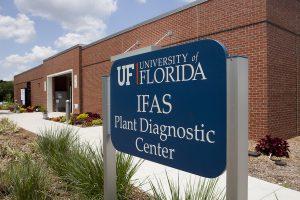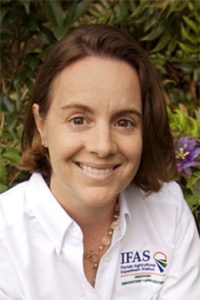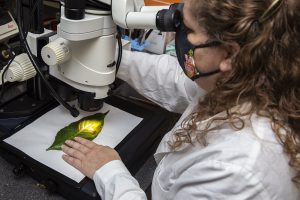The National Institute of Food and Agriculture (NIFA) recently awarded $3 million in grants to support the National Plant Diagnostic Network (NPDN), including $617,166 awarded to the UF/IFAS Plant Diagnostic Center to support the Southern Plant Diagnostic Network (SPDN).

The NPDN was established in 2002 by the U.S. Department of Agriculture and the Office of Homeland Security (precursor of the Department of Homeland Security) to protect the country’s agriculture from biological attacks. The network now consists of 70 diagnostic labs in all 50 states and four territories, split into five regional networks.
The Plant Diagnostic Center is the host institution of the SPDN, which consists of laboratories in 14 states and territories. The SPDN is the largest regional network in the country, and home to a huge breadth of crops, said Dr. Carrie Lapaire Harmon, director of the Plant Diagnostic Center and PI for the project along with Co-Director Dr. Jeffrey Jones. The funding “recognizes the SDPN as a team that is doing a good job and should continue to be supported,” she said.

Laboratories in the network are able to rely on each other, and each is able to excel in certain areas. “Auburn is at the forefront of virus detection and diagnostics,” Dr. Harmon said. Mississippi State University has the infrastructure to serve as a nematode resource. Texas A&M is working on seed testing, which is a national need, building a team of diagnosticians that can do virus detection in seeds. N.C.S.U. serves as a national resource for entomology. None of us have to be experts in everything, but as a region we have incredible expertise.”

Recognizing the importance of the Plant Diagnostic Center’s role in the NPDN and SPDN, and its importance to agriculture in Florida and beyond, IFAS opened a state-of-the-art facility for the PDC in 2013. The facility includes a containment lab, allowing it to accept samples from every state and territory, as well as international samples – the only diagnostic lab in the region that is able to do so. A teaching lab enables the PDC to help train diagnosticians from around the world.
Dr. Harmon also serves as the co-PI for outreach for the Diagnostic Assay Validation Network (DAVN). Funded by a USDA-AFRI competitive grant, DAVN exists to help better connect diagnostic labs with researchers via a dashboard of tools to support statistical analysis of validation and find expertise and resources such as positive controls. “DAVN wouldn’t exist if the NPDN didn’t exist,” said Dr. Harmon. “And both networks have a home here because IFAS recognizes the importance of the work we do to serve Extension clientele everywhere.”
###
 4
4
